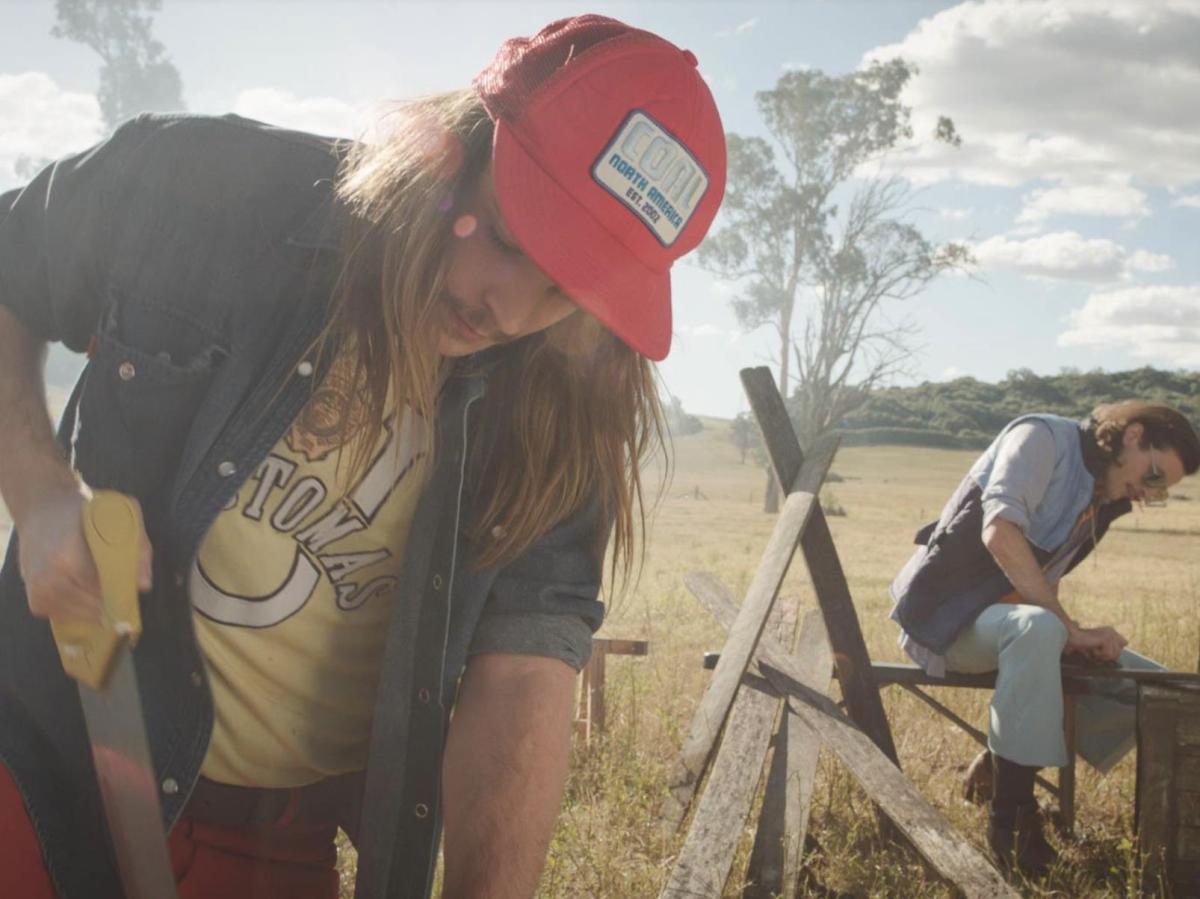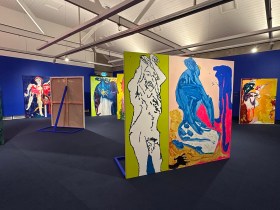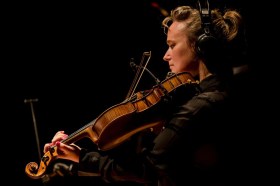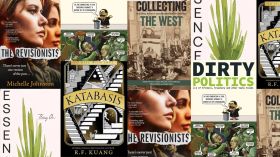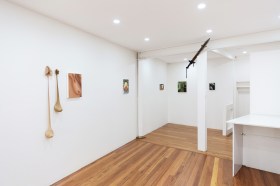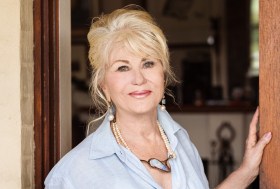Dear Seattle on set for the triple j music video shoot. Image supplied.
There’s a certain art to making a great music video. The aesthetic has to connect with the song or lyrics and represent the band or artist in a way that is true to their sound and, in many cases, their brand.
ArtsHub asked two NIDA students who recently collaborated with triple j to create music videos for Unearthed 2017 winners for some advice and insight on what it’s like to work with musicians.
Honesty really is the best policy
Sarah Hadley, who is studying a Masters of Fine Arts (Directing) at NIDA, directed a music video for Sydney band Dear Seattle. For her, finalising a concept was the initial hurdle.
‘We met our artist, we listened to the track for which they would like to make the music video, and then we sat down with them and pitched a series of ideas.’
Hadley’s advice is to listen carefully to all the creatives involved and to create a situation where everyone communicates their ideas clearly.
‘Because we are all young creative professionals and we are starting to figure out what each of our practices are, I’ll definitely carry with me the idea of making sure we sit down and that everyone is very open and honest with each other about what they want,’ said Hadley.
‘That’s maybe where we struggled at first when pitching to the boys and as soon as we realised that maybe they were saying one thing but wanted something else, we started to unpack that conversation, and that’s when our creativity started moving and we agreed on the work.’
Surround yourself with the right people
Kyle Jonsson, a third year Bachelor of Fine Arts (Design) student at NIDA, said the unique partnership between triple j and NIDA was an opportunity to learn invaluable practical experience.
He found that by collaborating with enthusiastic and like-minded people, his own skills developed in new ways.
‘It instilled in me to go big, in terms of beyond what thought I was capable of , because when you surround yourself with amazing collaborators you do things you may not have expected,’ he said.
Jonsson worked as the Production Designer on a music video for Brisbane artist May Lyn. He collaborated with fellow NIDA Masters Student Alanah Guiry who directed the clip.
‘We started by listening to the song to see what sort of stories, images and visual references were evoked…because the song [Soldiers] is about the criminalisation of freedom of speech in Malaysia, May Lyn was adamant that she didn’t want it to be too literal.
‘We took a more conceptual approach to telling that story by looking at more of a dystopian future world that was referenced in the Malaysian criminalisation of free speech. That’s how we began and we just focused on the images of the song and moved on from there.’
Consider the existing audience
If you are familiar with the kind of music your client makes, that’s great. But if not, you should research what lifestyle and culture the existing audience is interested in.
‘We started by looking at what they had produced in the last six months for their screen content — their music videos and Facebook live profile. Their thing was mates, music, and drinking and partying, and so we had to find that within a storyline,’ said Hadley.
Hadley looked for inspiration outside the music scene to come up with a stylised aesthetic that still spoke to existing fans interests.
‘We looked at beer commercials, classic sunset and corona advertisements that sell the beach lifestyle. We tried to bring elements of all this together to create a world where they could exist, but also people who have seen those kinds of advertisements who are interested in being outside, going to the beach, and having a beer with friends could come into that storyline as well.’
‘We had to make sure we were still talking to that audience, while attracting a new audience to mirror the growing popularity of their music.’
Follow what excites you
Hadley said filmmakers and directors who are creating a music video should bring their own point of view.
‘Unpack what they’ve done previously, listen to what they want, and then incorporate whatever excites you about their sound or what you think their aesthetic is. Bring that to the table and try to supercharge or refresh whatever it is they currently have going on.’
‘Honour everybody in the process, but make sure your voice is there and their voice is there so that you find something hopefully unexpected and hopefully new and surprising.’

